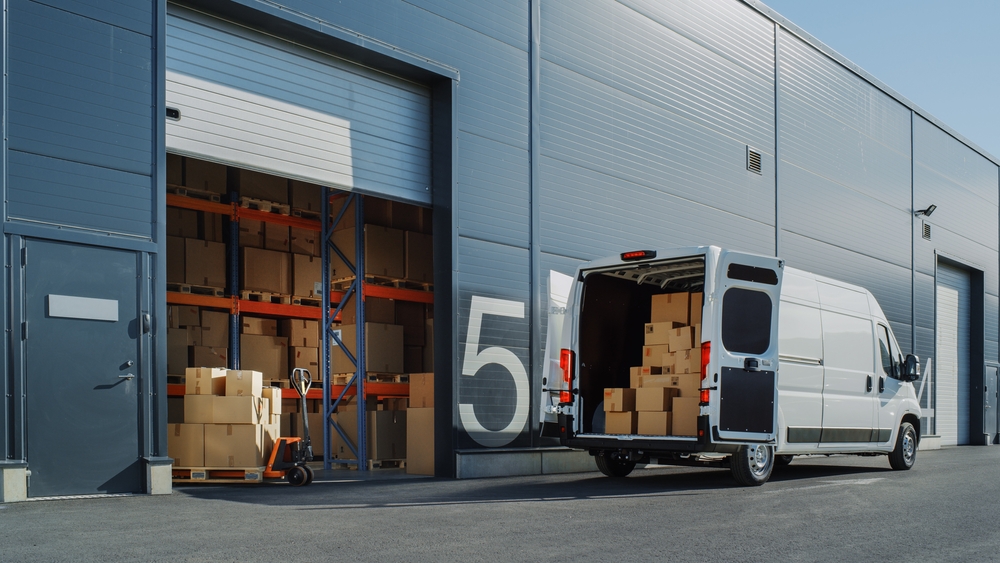Most people today prefer to shop online in the comfort of their homes rather than physically visiting a store. As a result, it altered how businesses deliver and ship their goods across the globe.
With the rise of eCommerce growing more apparent, the market has faced significant growth in the logistics and shipping industry. Even as the world moves out of a pandemic, your brand must prioritize shipping options and deals as part of your business strategy.
Learn more about the methods, strategies, and costs that go into eCommerce shipping with the infographic guide below.

eCommerce Shipping Solutions Methods
Different shipping methods can cater to varying strategies and needs. Here are a few examples of eCommerce shipping solutions you can use for your operations.
- 2-day shipping
Most eCommerce giants, such as Amazon Prime, offer 2-day shipping options for premium members. While it’s seen as an exclusive choice, businesses may opt for this scheme at a lower cost. - Same-day delivery
Since many consumers enjoy instant gratification from their purchases, same-day delivery has become a popular shipping option. Those who have placed an order within the cut-off period may receive their orders within a few hours. - Expedited shipping
Priority is given to packages under this service, allowing them to run through systems faster than standard deliveries. It can also be a good option to avoid shopping cart abandonment as it encourages customers to shop more. - Scheduled delivery for pre-orders
Customers pre-order products before their availability to ensure that an item will be available to them on release. These are scheduled accordingly to ensure deliveries are sent out as expected. - Overnight shipping
If you want your business to use every hour, overnight shipping provides convenience to you and your customers. It guarantees that customers will get their orders the next business day while providing a means to keep your operations running optimally. - International shipping
Those looking to grow their business globally can opt for international shipping strategies to boost sales. Yet, this can be challenging and costly as different countries have varying shipment laws and regulations.
- Freight shipping
Freight cargo can be classified as anything over 150 pounds or 30 inches by 30 inches by 30 inches in dimension. While freight cargo usually involves shipping large packages internationally, you may also send them to domestic locations.
eCommerce Shipping Solutions Strategies
You must also build a strong support system to ensure an efficient shipping strategy. These eCommerce shipping best practices will allow your operations to keep going while mitigating risks and losses.
- Put together a great team
Working together with a well-coordinated team allows you to do more in less time. Communication is essential in this step, as each department needs a clear idea of how the shipping process is managed.
- Know your goals
Without a goal, your business can’t establish its priorities and know what steps you need to take. It can also lead you to waste time and valuable resources as you aimlessly work through methods of making a profit. - Choose the appropriate shipping strategy
As businesses have different needs, not all approaches to shipping will work for you. Instead, look for a strategy that can provide what your brand lacks. You can implement cargo tracking or drop shipping. The ideal ones for your business will allow you to perform better while strengthening your weak points. - Consider your packaging material
Packaging allows you to efficiently show off your products' appeal while protecting them in storage and transit. Depending on your shipping method, different materials can add varying benefits to your delivery scheme, such as decreasing costs. - Incorporate sustainable alternatives
Most of the world’s traded products are shipped by sea, which causes heavy environmental impacts. One way of mitigating these effects is by switching to green packaging and working with an eco-friendly logistics service. - Get covered with shipping insurance
While it’s not ideal, packages can often be lost, stolen, or damaged. As such, getting suitable coverage on your shipping operations can be a good way of mitigating your risks and losses. - Stay updated with regulations and policies
Knowing international shipping laws and regulations can save you time and money before deciding to cater to a specific area. It’ll also help you comply with other formalities that help establish your business smoothly.
How to Calculate Shipping Costs
Finding a shipping solution for your eCommerce business can often be costly as the prices for logistics rise. Luckily, there are a few ways you can calculate your shipping costs to ensure things won’t go out of hand.
- Consider package size and weight
Many major couriers charge depending on the specifications of your parcels. The bigger and heavier they are, the higher the price you’ll pay for shipping. - Assess the shipping destination
The shipping price often depends on the destination of the package. Local destinations within a specific zone are usually manageable. But international packages will face additional costs for taxes and other fees.
- Courier cost for each mileage
Local deliveries made on the same day are based on a set price for the base kilometer. Every succeeding kilometer beyond that will be subjected to an add-on fee and possibly more if the receiver opts for special arrangements.
- Include packaging cost
Additional material needed to deliver any items safely will come as an add-on fee to the product's total price. By including the packaging cost, you can avoid losing revenue while protecting the product regardless of where it’s headed. - Consider handling fee
You may establish additional fees to cover labor and other costs needed to complete an order. The price for this can vary for each business depending on how its operations are maintained. - Determine the value of the contents
Knowing the value of your packages before shipping will serve as a safety net for your business. Your insurance can cover the cost if a parcel doesn’t reach your customers. - Be aware of delivery timelines
When shipping to multiple territories, expedited deliveries come at a higher cost as it takes priority over other orders. Local destinations may be done within a day, but international orders may require priority air shipping to meet the deadline. - Prepare for emergency scenarios
Every business should prepare a recovery plan should its operations be put on hold. Doing so allows you to mitigate the risks of losses while keeping you and your customers safe.
Shipping Solutions for All Your eCommerce Needs
Even before the dawn of the COVID-19 pandemic, the eCommerce market faced steady growth as consumers became more reliant on the internet. And with consumer behavior constantly changing, your brand needs to know how to keep up with the new trends.
As your business shifts to the digital realm, one of your primary challenges is how you will get your products to your customers safely. If you're looking for more insights on how you can manage your eCommerce process, make sure to book a demo with RUSH, your reliable eCommerce solutions provider.

COO at RUSH Technologies
Jeff Alejandrino is the Chief Operating Officer at RUSH Technologies - the go-to e-commerce services partner of every business in making digital easy, efficient, and effective in the Philippines. His past experiences include Business Development, Account Management and Partnership Management across different industries, from Banking, Service, and Food and Beverage. His pastime involves managing the family business. His interests vary from traveling and exploring new places to eat, to just staying at home watching series and movies.

Jeff Alejandrino
COO at RUSH TechnologiesJeff Alejandrino is the Chief Operating Officer at RUSH Technologies - the go-to e-commerce services partner of every business in making digital easy, efficient, and effective in the Philippines. His past experiences include Business Development, Account Management and Partnership Management across different industries, from Banking, Service, and Food and Beverage. His pastime involves managing the family business. His interests vary from traveling and exploring new places to eat, to just staying at home watching series and movies.









